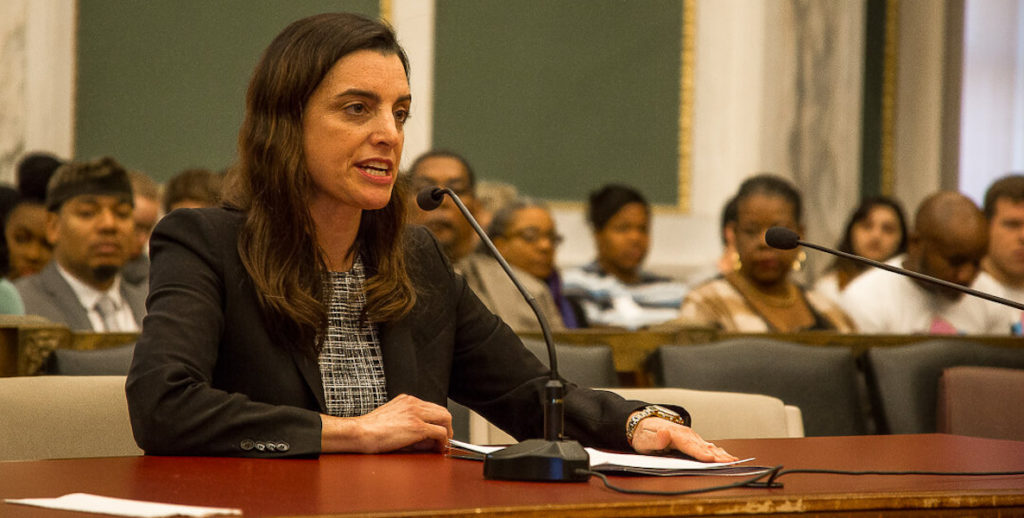![]()
What confidence could any of us have that, if we were to truly audit local government, we’d find an otherwise unblemished commitment to handling taxpayer dollars as a sacred trust?
Of course, the problem wasn’t really Dubow. It was, and remains, a culture of local governance that practices slipshod management and is allergic to accountability, as evidenced by the Kenney administration’s response at the time: When asked if anyone would be fired over the accounting mistakes, Chief of Staff Jim Engler said, “No, that’s not how we operate.”
Now, on the eve of budget season, comes a report from City Controller Rebecca Rhynhart that dives deeply into the historic spending spree of Mayor Kenney. By following the money, Rhynhart shows what the aforementioned accounting scandals hinted at: If you’re a taxpayer, you’re seen as little more than an ATM machine for career politicians and apparatchiks. There is no one looking out for your interests in city government.
How bad is Kenney’s spending addiction? He’s added over one billion dollars to ![]()
Payroll expenses surged 8 percent the last two years, as Kenney has added nearly 1,000 workers to the city workforce—at the same time that overtime costs have exploded, which, in itself, ought to be a red flag connoting that no one is really in charge when it comes to managing the levers of government: In reasonably-run governments, when full-time workforces shrink, overtime justifiably rises.
In governments where bloat and waste rule the day, however, full-time workers and overtime simultaneously expand, which is the story of 7 of 11 of our biggest city departments. Reading Rhynhart’s report is like reading a science fiction novel, only in this story the giant wrecking ball of a monster that keeps growing and marauding is a municipal government.
“The last few years, we’ve seen this significant increase in spending, and it prompted the question, ‘Where is all this money going?’” Rhynhart said when I caught up with her this week. “I heard people say that we’re just getting back to pre-recession levels of spending, or that the increase was due to union contracts. But there hasn’t really been a transparent answer to the question. As the city watchdog, we decided to provide one.”
If you’re a taxpayer, you’re seen as little more than an ATM machine for career politicians and apparatchiks.
Rhynhart’s research refutes those two suppositions. She goes back to 2006 and finds that, under Mayor Kenney, spending has far surpassed what had come before. And as for those union contracts?
“They’re roughly 3 percent raises, with police and fire getting a little more,” she says. “You can argue that they were marginally higher than inflation, but they weren’t completely unreasonable, and don’t explain such a historic jump in spending.”
So what does? Reading between the lines of Rhynhart’s findings can only lead to
“It shows a lack of management over time that raises real questions,” Rhynhart says.
Since 2017, the Fire Department has added 279 full-time employees and, at $51 million, more than doubled its overtime spending. This at a time when, nationwide, the number of fires responded to by municipal fire departments has dropped by a third over the last 40 years, essentially remaking many firefighters into medical responders.
Fifteen years ago, a blue-ribbon panel convened by then-Mayor John Street recommended closing some firehouses, finding that, in a city that averaged a handful of fires a day, there wasn’t enough work for 60 fully-staffed, 24/7 engine and 29 ladder companies. When Michael Nutter tried to close some down, the firefighters union went haywire.
Rhynhart isn’t making policy prescriptions like calling for the closing of firehouses, but her report makes clear that, in this same-old, same-old town, no one is diving deep into these issues and asking questions, let alone questioning answers.
“I’m not criticizing any spending priority the Mayor and City Council are making,” she says. “That’s their job to do. I’m just saying that, whatever the priorities are, there should be transparency and accountability and discussion. Budgets are choices, and when you invest in one thing, you’re not putting that money into something else, like wage tax reform that can grow jobs.”
Reading Rhynhart’s report is like reading a science fiction novel, only in this story the giant wrecking ball of a monster that keeps growing and marauding is a municipal government.
There are some good signs in Rhynhart’s report, but even those feel like pyrrhic victories. The Department of Prisons reduced its payroll by $10 million—a good start. But, when the prison population is down 42 percent, and the House of Corrections has been closed, shouldn’t more savings be found?
And, it turns out, the city has made some “pay as you go” payments to fund capital projects, rather than borrow. Generally, that is a fiscally sound practice. But even when being fiscally responsible, Rhynhart finds the city’s transparency sorely lacking.
“A city budget document describing the uses for a proposed $47 million payment to the Capital Fund in FY19 includes descriptions of 21 separate projects across more than 10 departments, the largest of which is $12M for vehicle purchases in the Fleet Department,” Rhynhart writes. “Publicly available information for the remaining payments could not be identified.”
Rhynhart’s report is not her sexiest, but, as a snapshot of unthinking government at work, it may be her most important. She’s followed the money, which begs the follow-up question: What return have we gotten on all this investment?
“That is the question,” she says. “Because it’s not clear. I would think the administration would be showing how these investments are moving the needle, and what the outcome measure is. And if they’re not moving the needle, you stop doing it and try something else. But they’re not doing that.”
And then Rebecca Rhynhart says something, almost to herself, that a long line of watchdogs before her have likely said to themselves. “I could think of doing something on that question from my end,” she says.


